Ayahuasca/DMT
For centuries, if not millennia, indigenous Amazonian shamans have used ayahuasca to heal the physical, emotional and spiritual ills of their communities. This visionary brew contains the psychoactive compound DMT, as well as other chemicals called monoamine oxidase inhibitors (MAOIs) which block the enzymes in the human body that normally break down DMT before it reaches the brain.
Like many psychedelics, DMT interacts with serotonin receptors in the brain in order to elevate mood and enhance emotional wellbeing. Because of this, the compound has been successfully used to treat psychological disorders like depression and post-traumatic stress disorder (PTSD), though much more research is needed in order to illuminate the neurobiological mechanisms behind this therapeutic effect.
Our research with DMT
As part of the Beckley/Imperial collaboration, we have obtained fascinating results from our first ever placebo-controlled investigation of the effects of DMT on human brain activity.
The aims of the study were:
1) To determine how DMT affects EEG recorded brain activity
2) To establish the relationship between these brain activity measures, the real-time progression of the subjective experience and parallel changes in plasma levels of DMT
3) To map more finely between brain and experience through the use of micro-phenomenological interviews, which promote detailed chronological accounts of subjective experiences, while reducing biases commonly associated with first person reports.
Brain activity recorded during the peak of the DMT experience confirmed what we previously observed with other compounds such as LSD, i.e. a decrease in alpha frequencies (which are the main frequencies involved in normal consciousness) and an increase in signal complexity (put forward as a marker of state of consciousness, increasing from deep anaesthesia, to sleep, and to awake state).
However, the neural signature of the DMT experience included an increase in delta and theta waves, which are normally present during sleep, particularly when we dream. These changes have not been reported with other compounds such as psilocybin and LSD, and may reflect the complete immersive state that is unique to DMT (and 5-MeO-DMT).
Functional MRI was also used to record the changes in brain activity during the DMT experience. Results obtained using this imaging modality shows us how DMT alters the interaction between key brain networks, and enables a comparison to previously obtained results from our psilocybin and LSD studies.
Our research with ayahuasca
Studies carried out by the Beckley/Sant Pau Research Programme have revealed that ayahuasca use leads to an increase in several key traits associated with mindfulness, such as ‘decentering’, which refers to the ability to observe one’s thoughts and feelings in an objective and non-judgmental way. This, in turn, has been shown to help sufferers of depression, anxiety, grief and PTSD to overcome their conditions.
Our brain-imaging studies have revealed how ayahuasca reduces the control of a brain network called the default mode network, and provide compelling evidence that this may be behind the brew’s therapeutic power. Intriguingly, we also showed how certain compounds in ayahuasca stimulate the birth of new neurons from stem cells in a petri dish. This opens the door to the possibility of using ayahuasca to regenerate damaged brain cells, potentially pointing the way to a new pathway to treating Alzheimer’s and dementia.
Published Papers of Completed Studies
Podcast
- All
Links
- All
Support
- All
BIPRP
- All
Science Talk
- All
Amanda's Talks
- All
- Video Talk
- Featured
- 2016 Onwards
- 2011-2015
- 2010 and Earlier
- Science Talk
- Policy Talk
One-pager
- All
Music
- All
Amanda Feilding
- All
Events
- All
Highlights
- All
Psilocybin for Depression
- All
Current
- All
Category
- All
- Science
- Policy
- Culture
Substance/Method
- All
- Opiates
- Novel Psychoactive Substances
- Meditation
- Trepanation
- LSD
- Psilocybin
- Cannabis/cannabinoids
- Ayahuasca/DMT
- Coca/Cocaine
- MDMA
Collaboration
- All
- Beckley/Brazil Research Programme
- Beckley/Maastricht Research Programme
- Exeter University
- ICEERS
- Beckley/Sant Pau Research Programme
- University College London
- New York University
- Cardiff University
- Madrid Computense University
- Ethnobotanicals Research Programme
- Freiburg University
- Medical Office for Psychiatry and Psychotherapy, Solothurn
- Beckley/Sechenov Institute Research programme
- Hannover Medical School
- Beckley/Imperial Research Programme
- King's College London
- Johns Hopkins University
Clinical Application
- All
- Depression
- Addictions
- Anxiety
- Psychosis
- PTSD
- Cancer
- Cluster Headaches
Policy Focus
- All
- Policy Reports
- Advisory Work
- Seminar Series
- Advocacy/Campaigns
Type of publication
- All
- Original research
- Report
- Review
- Opinion/Correspondence
- Book
- Book chapter
- Conference abstract
- Petition/campaign
Search type
